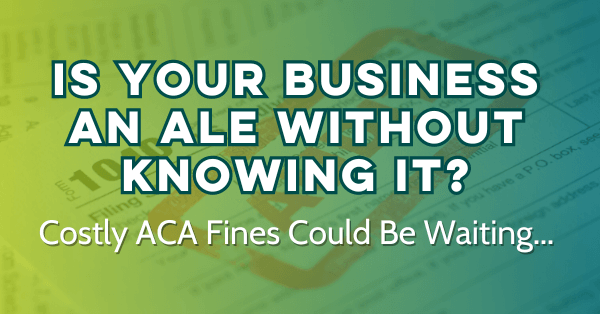Note: While informative, this blog is not a substitute for professional advice. However, Doyle offers free consultations for personalized guidance on your organization’s ALE status and ACA compliance.
Identifying whether your business qualifies as an Applicable Large Employer (ALE) is critical for navigating the Affordable Care Act (ACA) compliance. Many growing businesses are unaware of their ALE status, which can lead to hefty fines. This post will delve into the details of ALE status, its complexities, and the associated penalties.
ALE Status: The Primary Threshold
The Broadest Qualification At its core, a business is considered an ALE if it has 50 or more full-time employees (FTEs) or an equivalent combination of full-time and part-time employees. Understanding this threshold is the first step in determining your ALE status.
Identifying ALE Status: A Checklist of Scenarios
- Multiple Businesses Under One Owner: Owning multiple companies with different EINs? Their collective employee count might classify you as an ALE.
- Full-Time Equivalents Explained: Part-time employees can collectively contribute to your FTE count, potentially pushing your business into ALE territory.
- Impact of Seasonal Workers: Seasonal employees might affect your ALE status, depending on the numbers of employees and their employment duration.
For more insights, check the IRS guidelines on ALE determinations.
ACA Compliance: A Critical Responsibility for ALEs
If your business is an ALE, it is imperative to offer health insurance that meets ACA standards and accurately report this to the IRS. Non-compliance can result in severe penalties.
Understanding IRS Notices and Penalties
Specific IRS Notices for Non-Compliance
- IRS Letter 226J: A warning for potential non-compliance.
- IRS Letter 5699: A request for filing details, often a precursor to penalties.
Details on Penalties
- For Not Providing Coverage (4980H(a)): The annual penalty is $2,970 per full-time employee, excluding the first 30, if coverage is not offered to at least 95% of full-time staff.
- For Unaffordable Coverage (4980H(b)): If coverage isn’t affordable or doesn’t provide minimum value, the penalty is $4,460 per employee receiving a premium tax credit.
Explore IRS’s Employer Shared Responsibility Provisions for more details.
Action Steps for Suspected ALEs
Doyle’s Expertise: Your Path to Compliance If you think your business might be an ALE or if you’ve received an IRS notice, Doyle’s expertise in ACA compliance can provide clarity and potentially uncover penalty relief strategies.
Conclusion: Navigate with Confidence
Determining and maintaining ACA compliance as an ALE is complex. Doyle’s expert guidance can help you manage these challenges and explore potential relief options. Contact Doyle for a free consultation to determine your ALE status and ensure ACA compliance.
